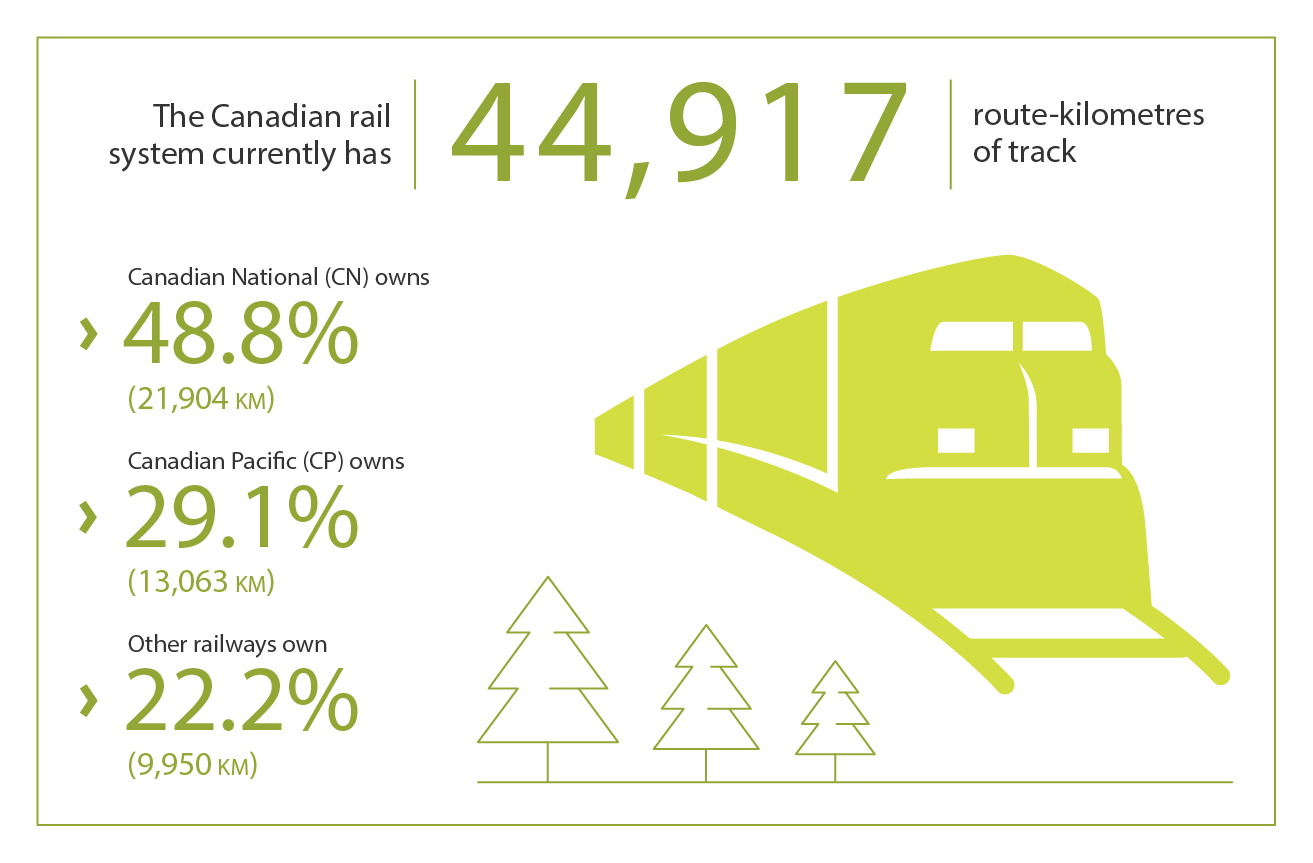Image description: Rail Transportation Network
The map of Canada shows the layout and extent of the Canadian rail system. This system currently has over 44,917 route-kilometres of track broken down into Canadian National track (48.8 per cent of the system, represented by blue lines), Canadian Pacific track (29.1 per cent, represented by red lines) and other railways track (22.2 per cent, represented by green lines).
Key traffic and volume statistics
Rail transportation serves nearly every part of the Canadian economy. Canada has an extended railway system that is used to transport mainly freight to and from the U.S. and international markets via coastal ports. There are also many passenger lines across Canada.
Freight sector
The freight rail sector focuses on moving heavy, bulk commodities and container traffic over long distances.
Canada has 2 major Class I freight railways, CN (Canadian National) and CP (Canadian Pacific), which are responsible for most freight rail traffic. Large U.S.-based carriers also operate in Canada, including the Burlington Northern Santa Fe Railway Company and CSX Transportation Inc.
Together, CN, CP and Burlington Northern Santa Fe Railway Company link trade between Canada, the U.S. and Mexico. Burlington Northern Santa Fe’s service to Canada’s Pacific Gateway gives Vancouver the unique advantage of being the only port on West Coast served by 3 Class I railroads.
In terms of equipment, in 2020 Class I railway carriers had:
- 2,210 locomotives
- 64,663 freight cars (mainly hopper cars, boxcars, flatcars and gondolas), and
- 423 passenger cars
There are 82 companies that fall under the authority of the Railway Safety Act. 25 of these companies are federal railway companies, who must also hold a certificate of fitness from the Canadian Transportation Agency.
There are also many federally or provincially regulated shortline railways that connect shippers with Class I railways or to other shortlines and ports in order to move products across longer distances. Shortline railways move an average of $34.4 billion worth of freight to and from continental rail networks, and to ports and terminals.
Image description - Rail Transportation infographic
The Canadian rail system currently has 44,917 route-kilometres of track
- Canadian National (CN) owns 48.8% (21,904 km)
- Canadian Pacific (CP) owns 29.1% (13,063 km)
- Other railways own 22.2% (9,950 km)
Passenger sector
The passenger rail sector provides commuter, intercity and tourist transportation services. National rail passenger services are mostly provided by VIA Rail on behalf of the Government of Canada. VIA Rail is an independent Crown Corporation created in 1977 that operates Canada’s national passenger rail service from coast to coast. It mainly uses tracks owned by freight rail companies.
Most of its services are in central Canada along the Québec-Windsor Corridor. VIA Rail also operates long-haul passenger routes between Toronto and Vancouver and Montreal and Halifax, as well as regional services to destinations such as Jasper, Prince Rupert, Winnipeg, and Churchill. In 2020, VIA Rail ran 202 weekly train departures on a 12,500 km network.
In addition to shortlines that move freight, some provide passenger rail services or tourism services, like the Rocky Mountaineer Railway.
